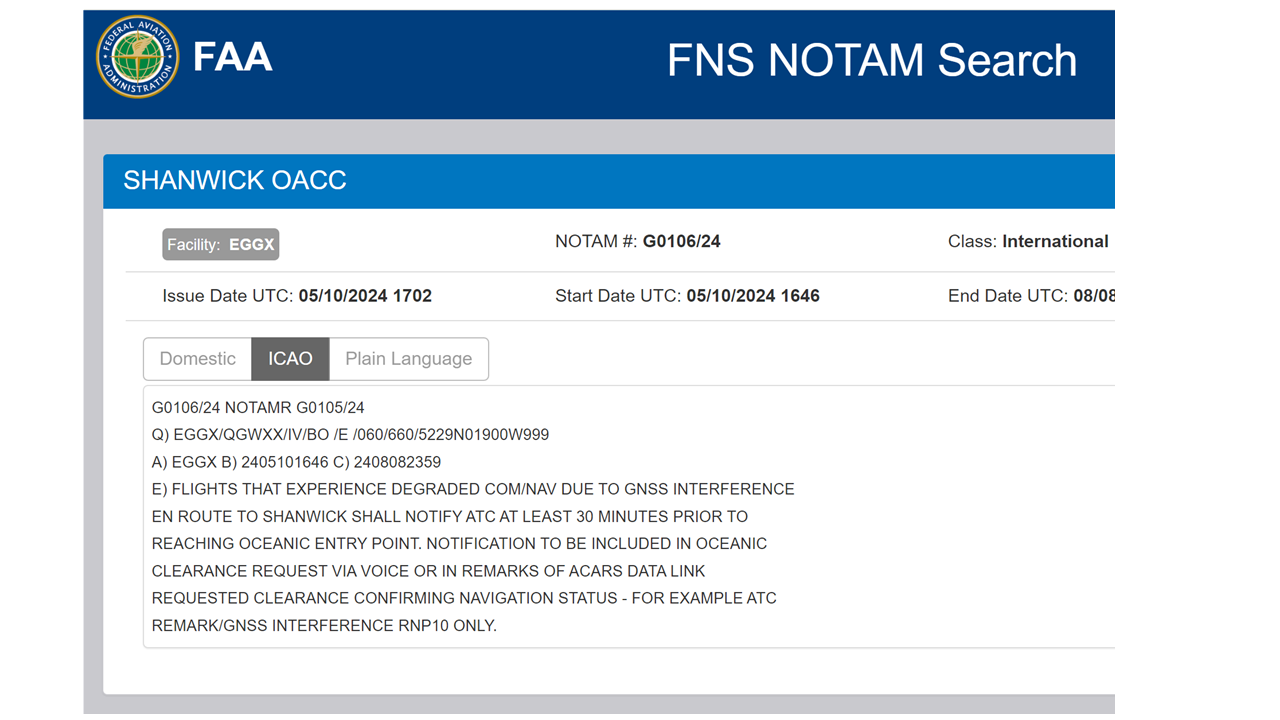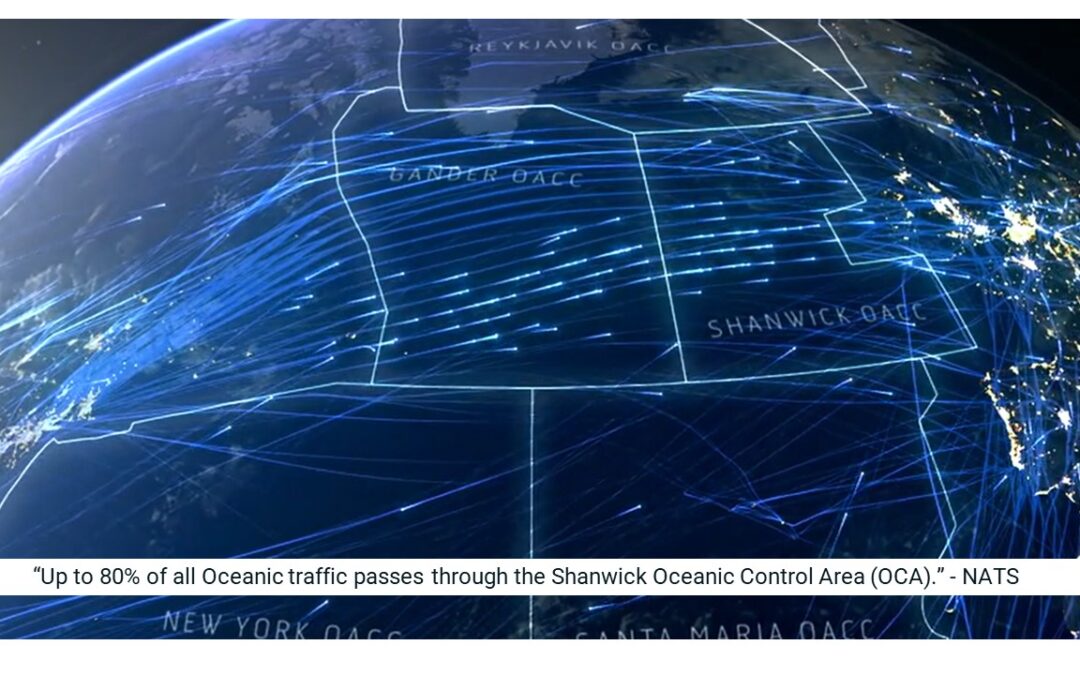Image: NATS
What’s New: Aircraft transiting the Atlantic from Europe without functioning GPS seems to have become a semi-regular occurrence. “Pre-boundary GNSS interference,” mentioned in the FAA note below, refers to aircraft jammed or spoofed before arriving to begin the crossing that have not been able to restore their GPS receivers to normal operations.
-
"13. DUE TO THE CONTINUED IMPACT OF PRE BOUNDARY GNSS INTERFERENCE, CREWS ARE REMINDED OF THE REQUIREMENTS WITHIN NOTAM G0106/24. - END OF PART THREE OF THREE PARTS)" FAA Advisory on North Atlantic Tracks updated 26 June 2024. See https://notams.aim.faa.gov/nat.html

Why It’s Important:
- Aircraft without GPS cannot be tracked across the ocean by air traffic control. Also, some anti-collision systems do not work.
- This means controllers must limit the number of aircraft in a track across the ocean so as to ensure they are well separated from each other. We understand that only one such aircraft is allowed to enter a track every ten minutes.
- The more aircraft that must be accommodated this way, the lower the capacity of the tracks and the greater the chance of increased flight times, flight delays and other problems.
What Else to Know:
- In our post on this topic on the 19th of June we talked about how pilots used to pull circuit breakers to reset electronic equipment, but that is not allowed anymore. We should have added that there are good reasons for that prohibition. One is that a circuit breaker or circuit breaker bar can control more than one piece of equipment. So pulling and resetting it could have much greater consequences than just resetting a balky GPS receiver.
- The impact of interference on a receiver depends greatly upon the type of receiver and type of interference.
- It is much easier for a GPS receiver to maintain signal lock than to acquire it.
- Sensible safety regulations make upgrading or changing any electronics equipment on commercial aircraft a long and difficult process.


